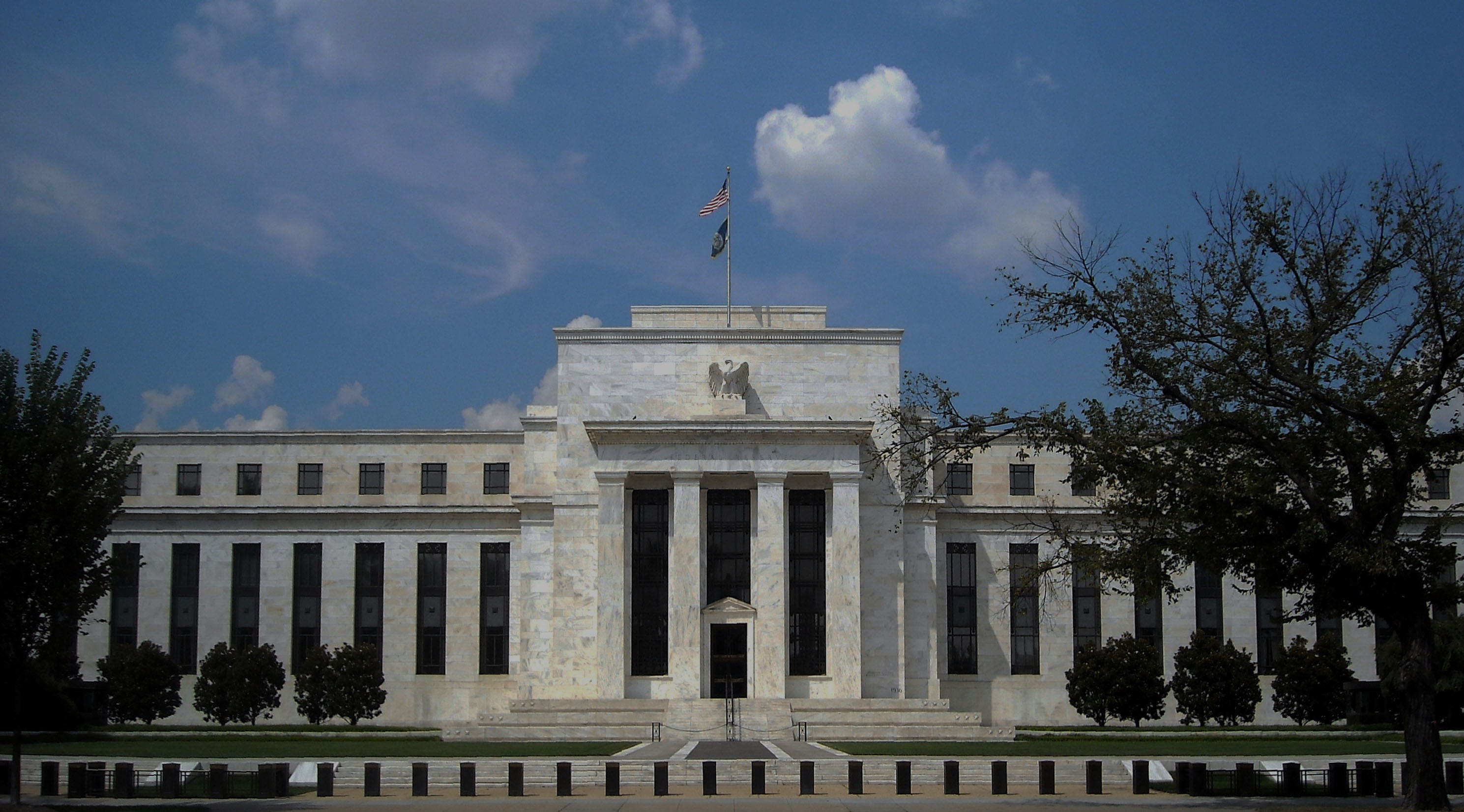During the years leading up to the Great Financial Crisis, Fed officials began to tell outsiders more and more about what members of the Federal Open Market Committee (FOMC) were thinking in setting operative interest-rate and price-level targets. My new INET Working Paper is adapted from a chapter in a book I am now writing. It treats the flood of selected policymaking information released by the committee after each meeting as misleading patter meant to distract the committee’s audience from observing the hard-to-defend cumulative effects Fed policies have had on the distribution of income and wealth. As in stage magic, lobbying activity that determines how differently FOMC policies actually impact the rich, the poor, and the middle classes still takes place behind an informational curtain.
Today, as during the Great Financial Crisis, the Fed’s policy strategy has been to prevent open insolvencies at US megabanks by making subsidized loans to US megabanks’ insolvent foreign counterparties (and to the foreign taxpayers that would otherwise have been asked to rescue them). At the same time, Fed leaders have resisted a broad-based bailout of insolvent US homeowners and landlords. During the GFC, they stood by as US banks foreclosed on all but a few privileged categories of distressed mortgage borrowers. Although households are receiving some help in the current go-around, forbearance is not forgiveness. Unpaid rents and mortgage payments are still mounting up.
The overwrought praise that Wall Street and the media subsequently heaped on Treasury and Federal Reserve leaders for being willing to punish lower-income households to get the rich through the Great Financial Crisis established a nasty precedent that is guiding monetary policy today. This unspoken precedent is “Bankers and Brokers first.”
A precedent is a previous event or action that sets a standard or guide for how one or one’s successors should (and therefore probably would) act in similar circumstances in the future. The 2008 troika of Bernanke, Geithner, and Paulson congratulated themselves for having the “courage” to put the interests of foreign bankers and major US financial institutions (including a few of its automobile makers — think the airlines and tourism industry today) ahead of ordinary US citizens. The victory laps that Barney Frank and Chris Dodd are taking this week for passing Dodd-Frank not only celebrate this approach, but provide opportunities for them to claim that they rescued rich and poor alike from complete and utter ruin [see, e.g., Bernanke, Geithner, and Paulson (2018)].
This portrait of distributional neutrality is propaganda of a high order. Current and former Fed and Treasury officials cannot fail to understand that, in accepting so much adulation, they have cemented a series of dangerous precedents. If public-service norms were more evenly balanced, instead of simply accepting praise, they might feel an obligation to identify the downside of following their lead in the future.
Aggressively devising creative, nontransparent, and arguably extralegal ways to transfer massive amounts of US taxpayer resources to wealthy stakeholders in zombie megabanks around the world is a dangerously elitist strategy. An important fourth crisis manager was left out of the celebration: former FDIC Chairman Sheila Bair. This was in large part because she was only a woman and because in Bair (2019) she dared to argue that, if future crisis managers were to distribute rescue costs in the ways the troika did, they were bound to encounter the kind of angry protest movements we are seeing today.
With a wink and a smile, bankers, regulators, and politicians assured us all in 2010 that a few carefully crafted words in the Dodd-Frank Act (DFA) could and would prevent generous anti-egalitarian taxpayer support from becoming available to the financial industry in the next crisis. Contrary to centuries of experience in the banking industry, the Dodd-Frank Act asks us to believe that governments can prevent crises by merely asking banks to post more (and possibly better) capital on their balance sheets. My research establishes that accounting-based requirements lose force the longer they are in place. This is because accountants take it as a challenge to circumvent them and in fact do this better and better the longer a particular rule stays in force.
In the decade since the DFA was enacted megabank lobbyists have sped up the natural rate of capital-requirement decay by convincing regulators of the need to “custom tailor” accounting formulas to the special circumstances of different categories of banks. Each nick and tuck that regulatory tailors devise in the way capital requirements are calculated open new and often unintended loopholes for other classes of financial institution to exploit.
Loopholes are part of any regulatory system. To make them hard for the public to see, bankers prefer that regulatory benefits be distributed in implicit ways. By that, I mean access to these benefits is based on understandings about how regulators should and will react in crisis circumstances. In the Covid crisis, the bogus restraints celebrated in the DFA have—as my 2012 paper predicted—simply lost their teeth. Bank examiners and accountants were directed to soften loss recognition and the Fed went on to devise (at last count) 14 openly discriminatory lending programs aimed at preserving particular classes of financial contracts and interests.
Confidence in the availability and sustainability of implicit safety-net support creates powerful incentives for megabankers to pry themselves loose from the bite of capital requirements and other regulatory restraints over time. This is the central message of my research career. I have asked readers to picture the mix of endless opposition and circumvention that financial rulemaking and enforcement entails as a dialectical process. After each crisis, sponsors of tougher capital requirements and other elaborate rules claim to have found ways to force bankers and their creditors to stay strong enough to absorb losses more or less as they occur. But sponsors seldom acknowledge that corporate-level restraints are bound to fail eventually. Placing accounting and other kinds of restraints on banker behavior fail because they do not directly attack either bankers’ appetite for tail risk or regulators’ incentives to forbear when times get tough.
Experience teaches us that corporate-level reforms do not and cannot hold their effectiveness over time. Rules beget regulation-induced innovations and these burden-reducing innovations become more and more successful over time. The difficulty governments face in devising and enforcing appropriate punishments for individual bankers that knowingly exploit safety-net protections converts national and regional safety nets into what amounts to a global Protection Racket operated by —and for the benefit of— thieving megabankers. My new paper explains how governments could make this racket far less profitable if for some unlikely reason politicians might conclude that toughening fraud laws would be a good thing.
References
Bair, Sheila, 2019. “Bank Bailouts Propped up the Financial System. But We Should Never Repeat Them,” Washington Post (May 5), https://www.washingtonpost.com/outlook/bank-bailouts-propped-up-the-financial-
system-but-we-should-never-repeat-them/2019/05/23/f50e001a-7bee-11e9-8ede-
f4abf521ef17_story.html?noredirect=on&utm_term=.6a6b29423edf.
Bernanke, Ben S., Timothy F. Geithner, and Henry M. Paulson Jr., 2018. “What We Need to Fight the Next Financial Crisis,” New York Times, (Sept. 12), https://www.nytimes.com/2018/09/07/opinion/sunday/bernanke-lehman-anniversary-oped.html.
Kane, Edward J., 2012. “Missing Elements in US Financial Reform: A Kübler-Ross Interpretation of the Dodd- Frank Act,” Journal of Banking and Finance 36 (March 2012), 654-66.






